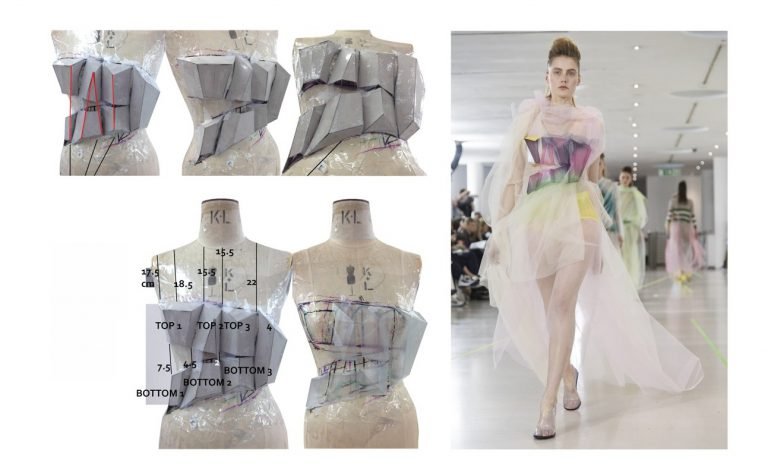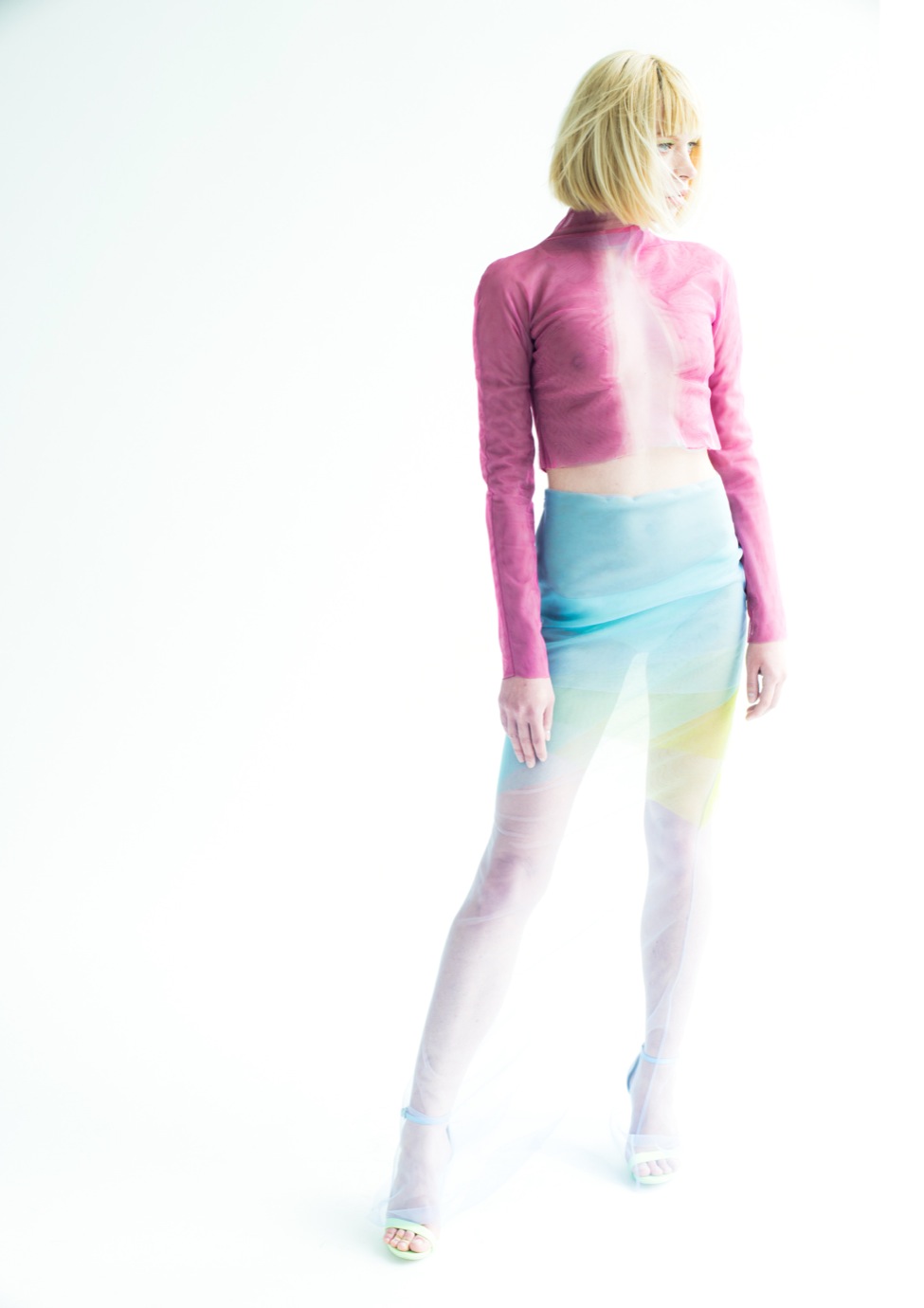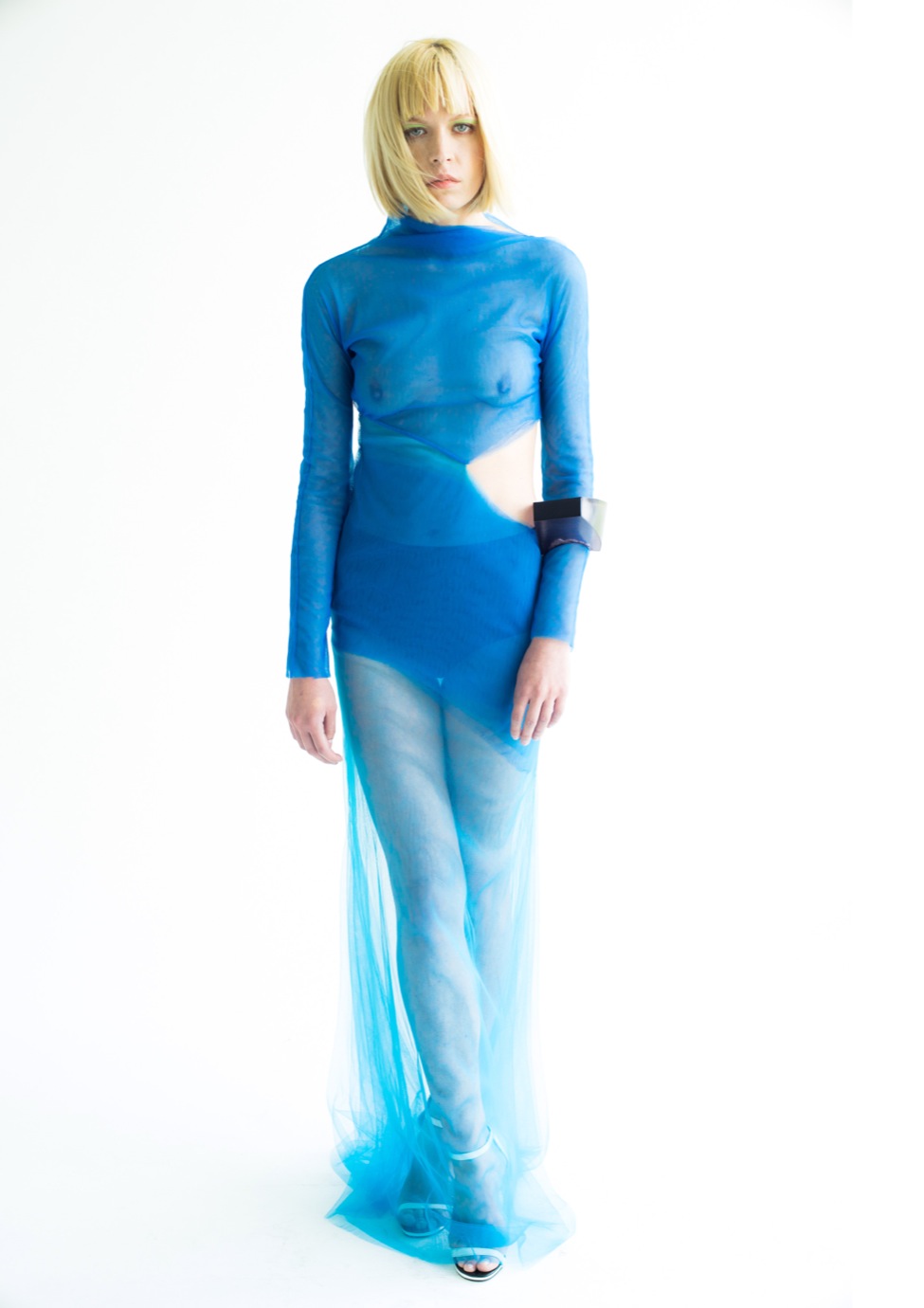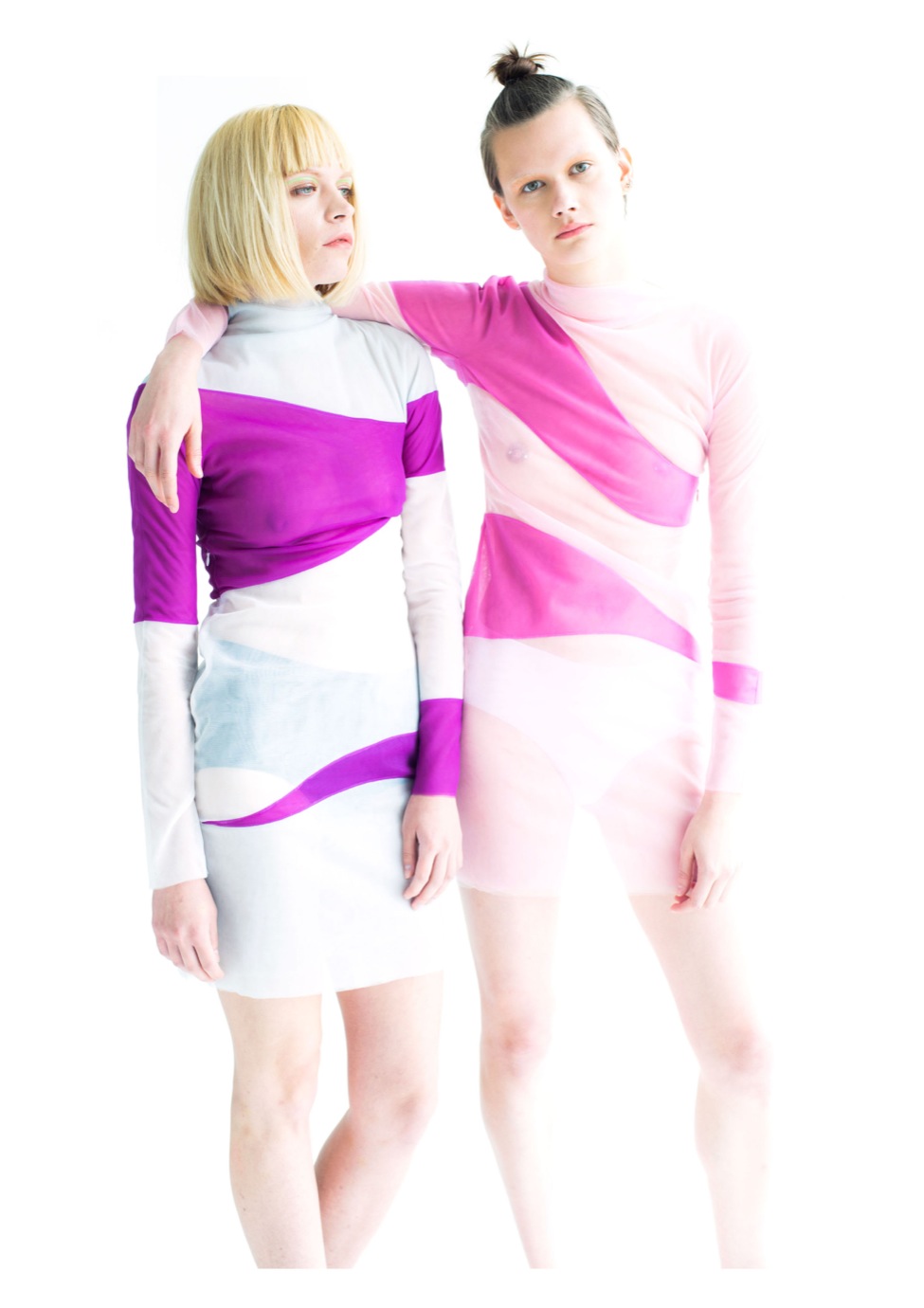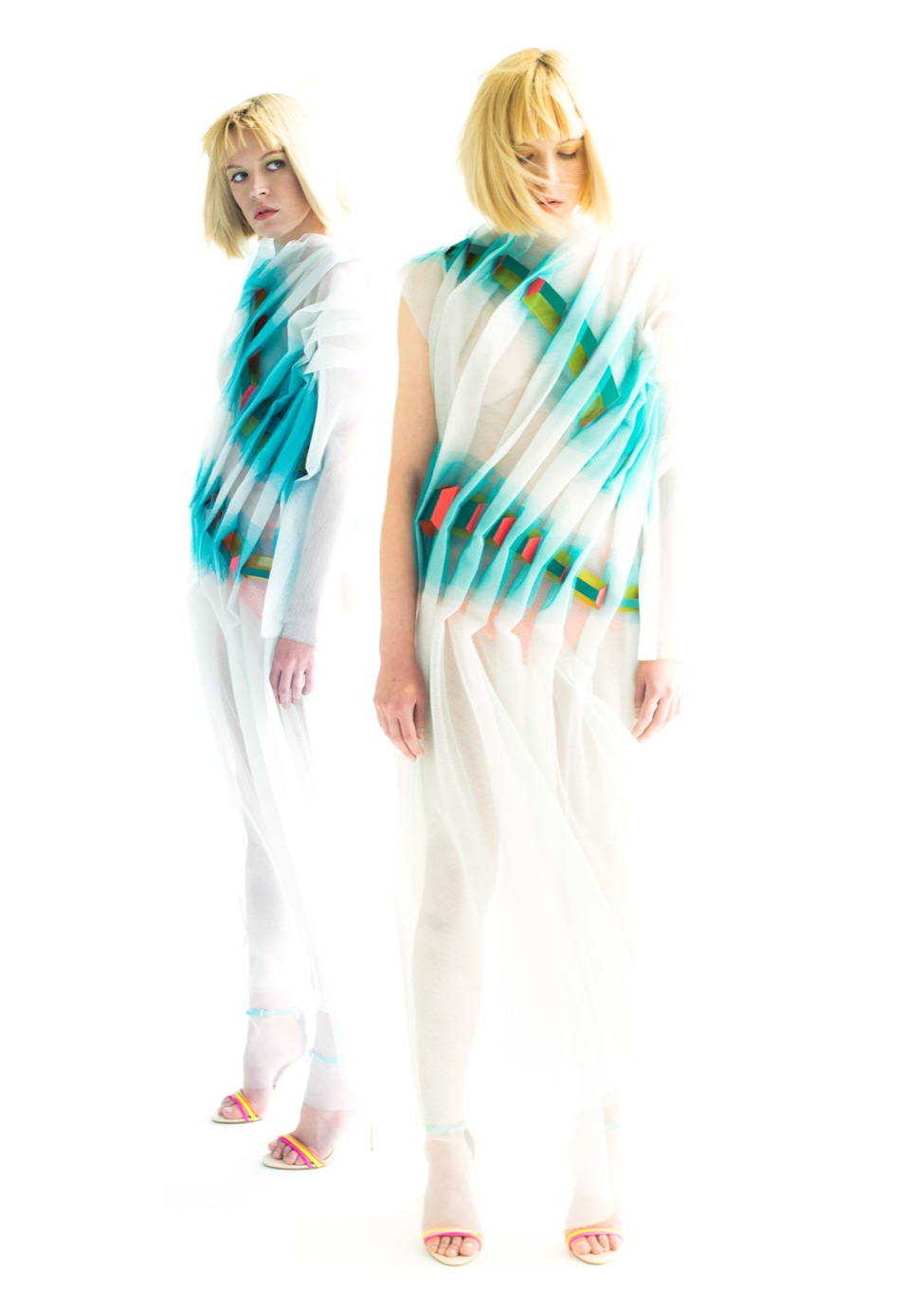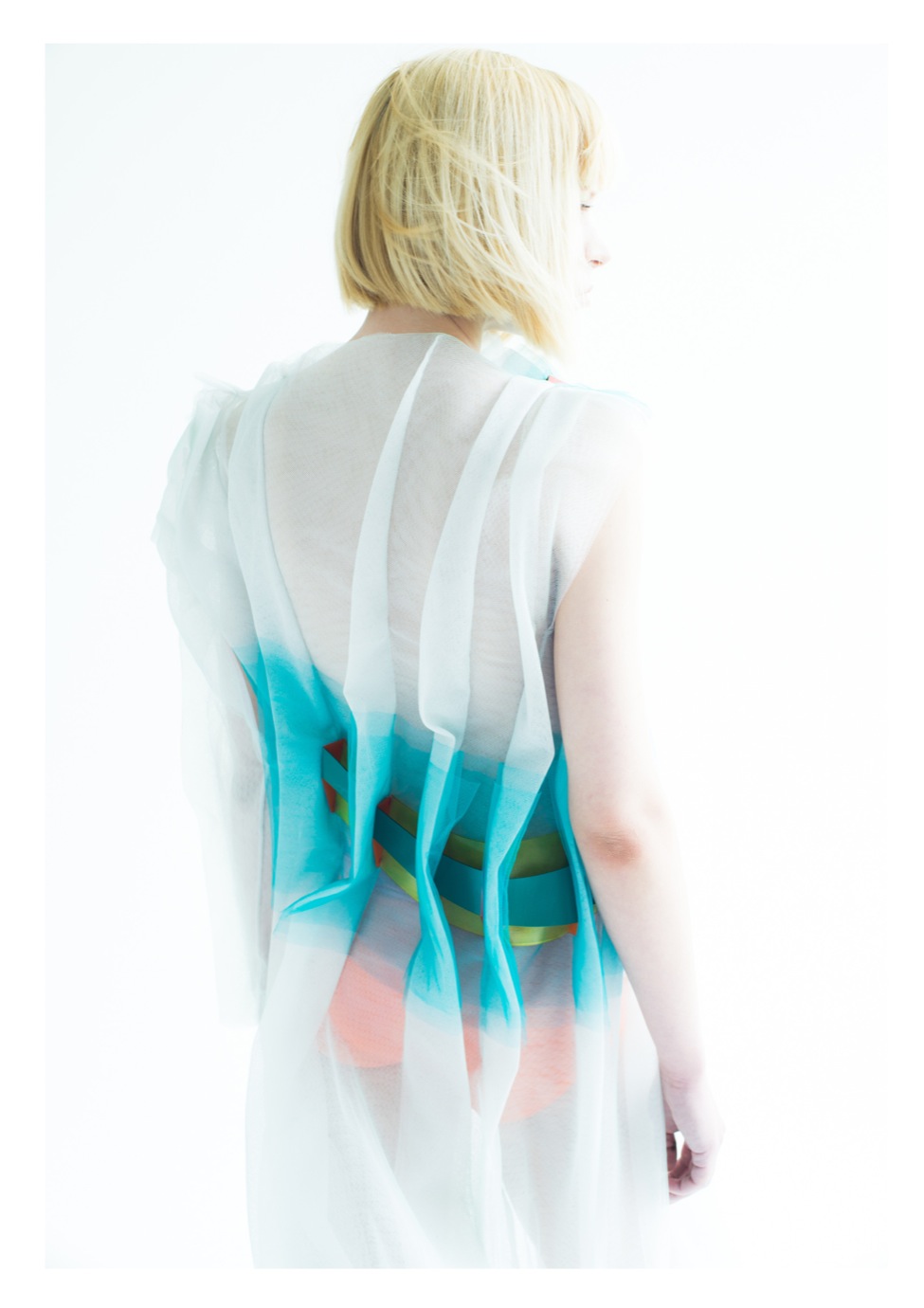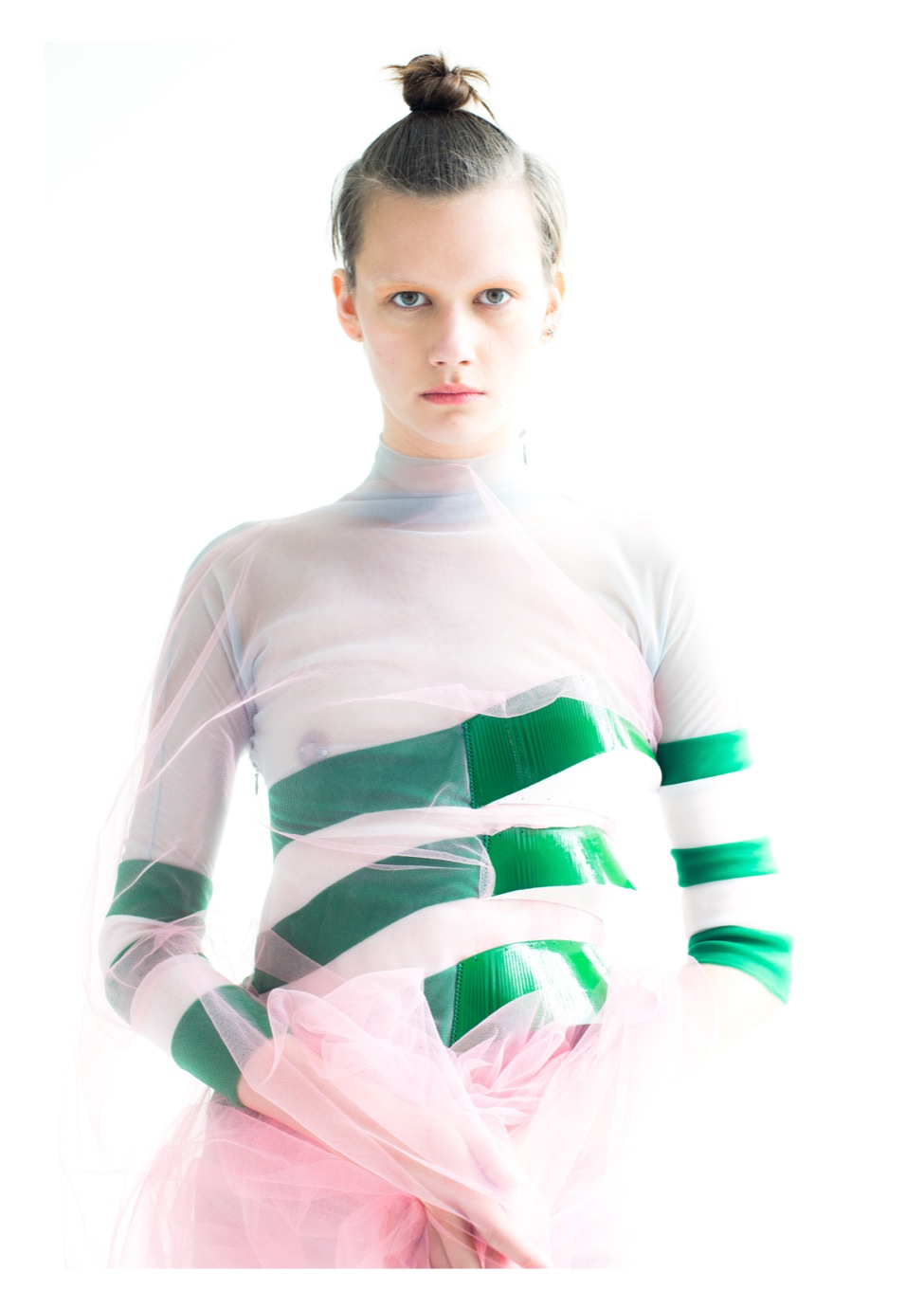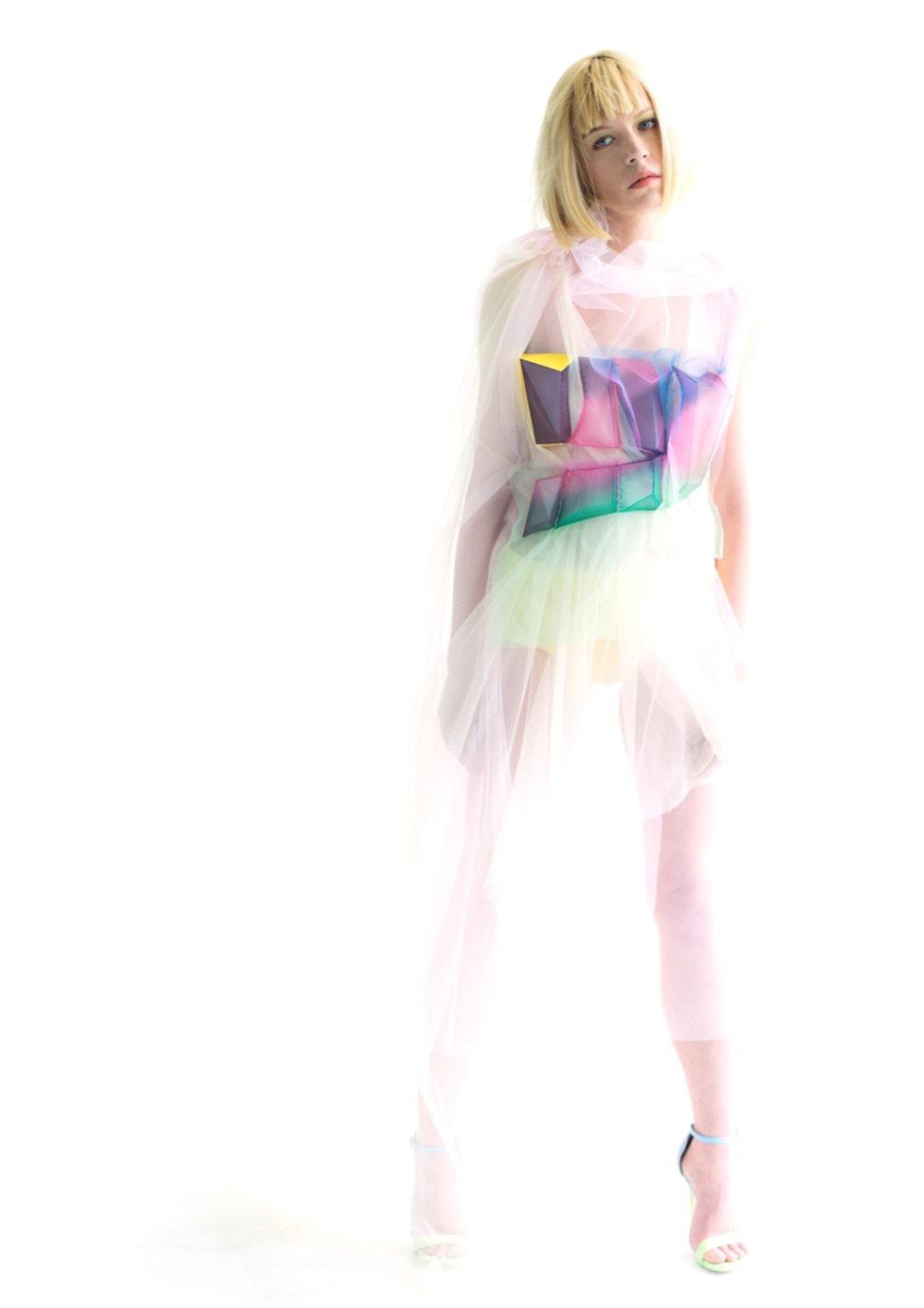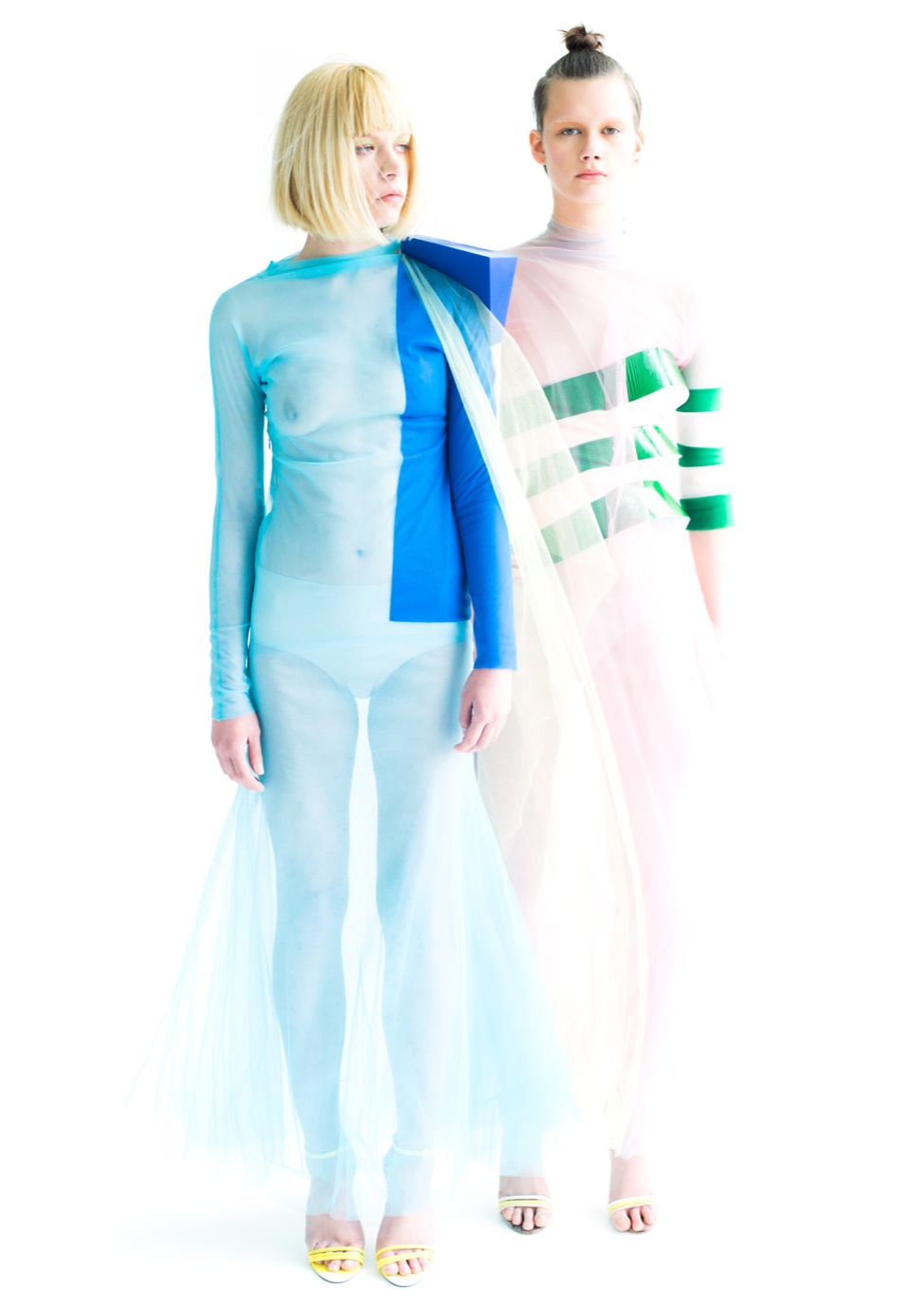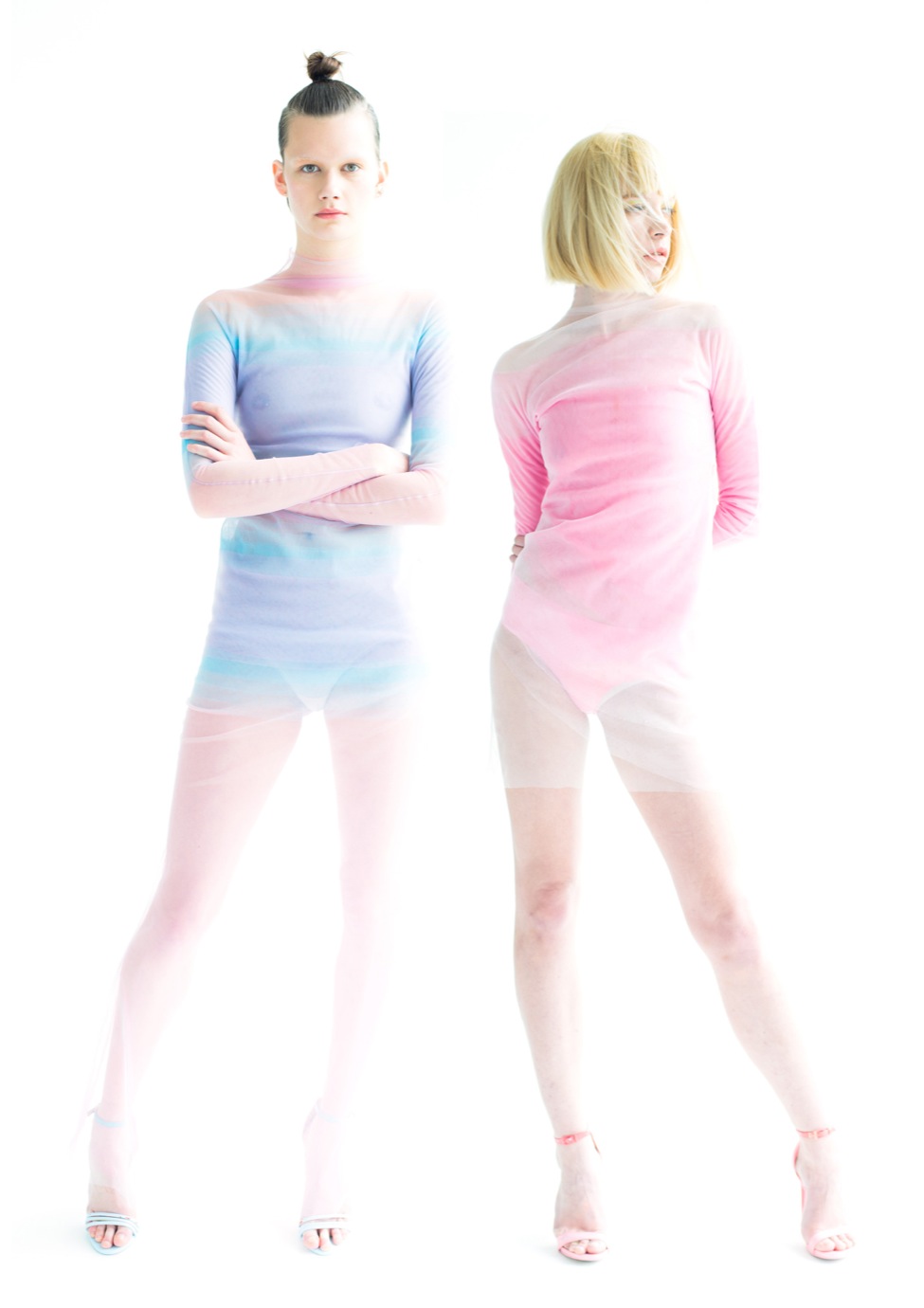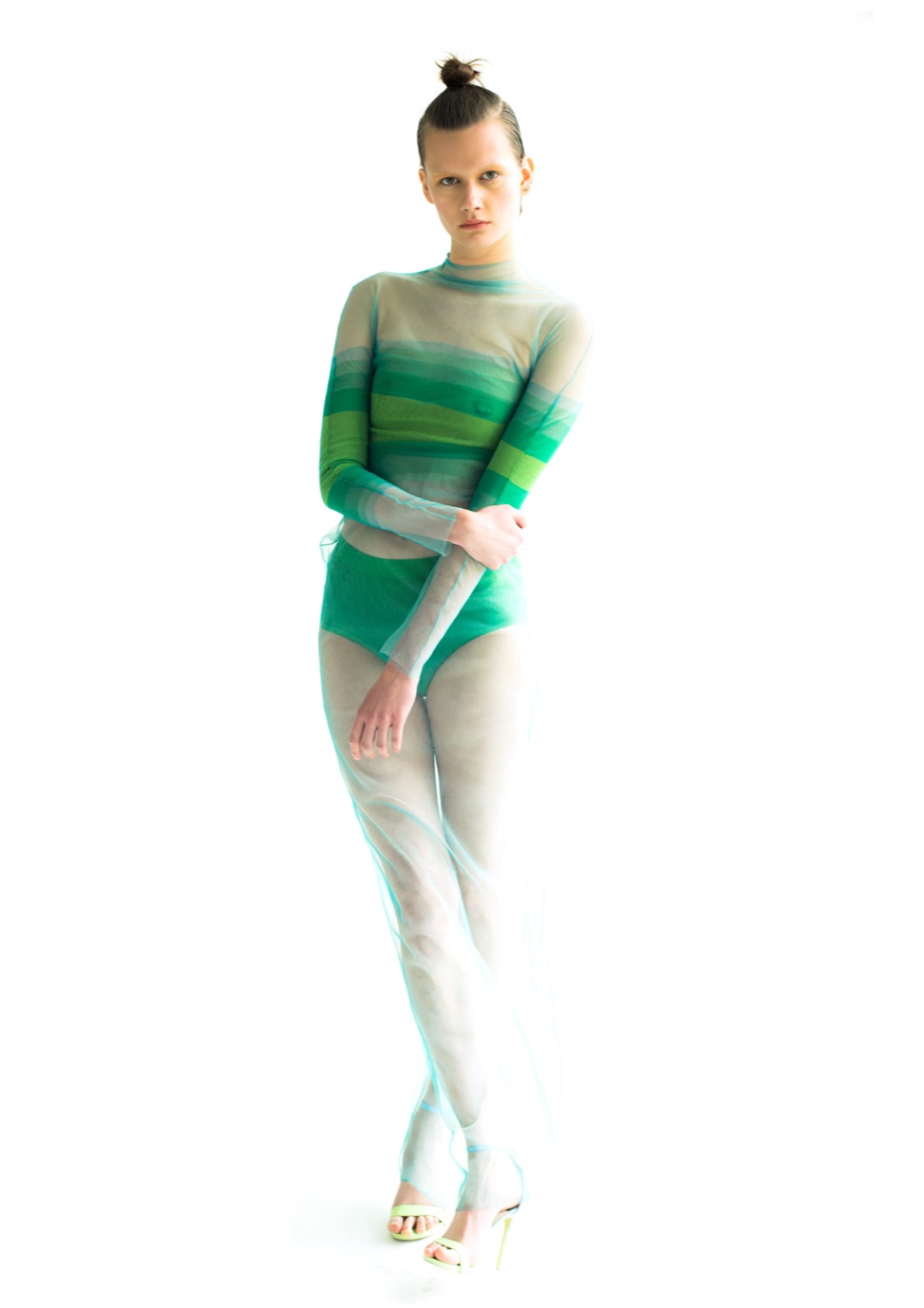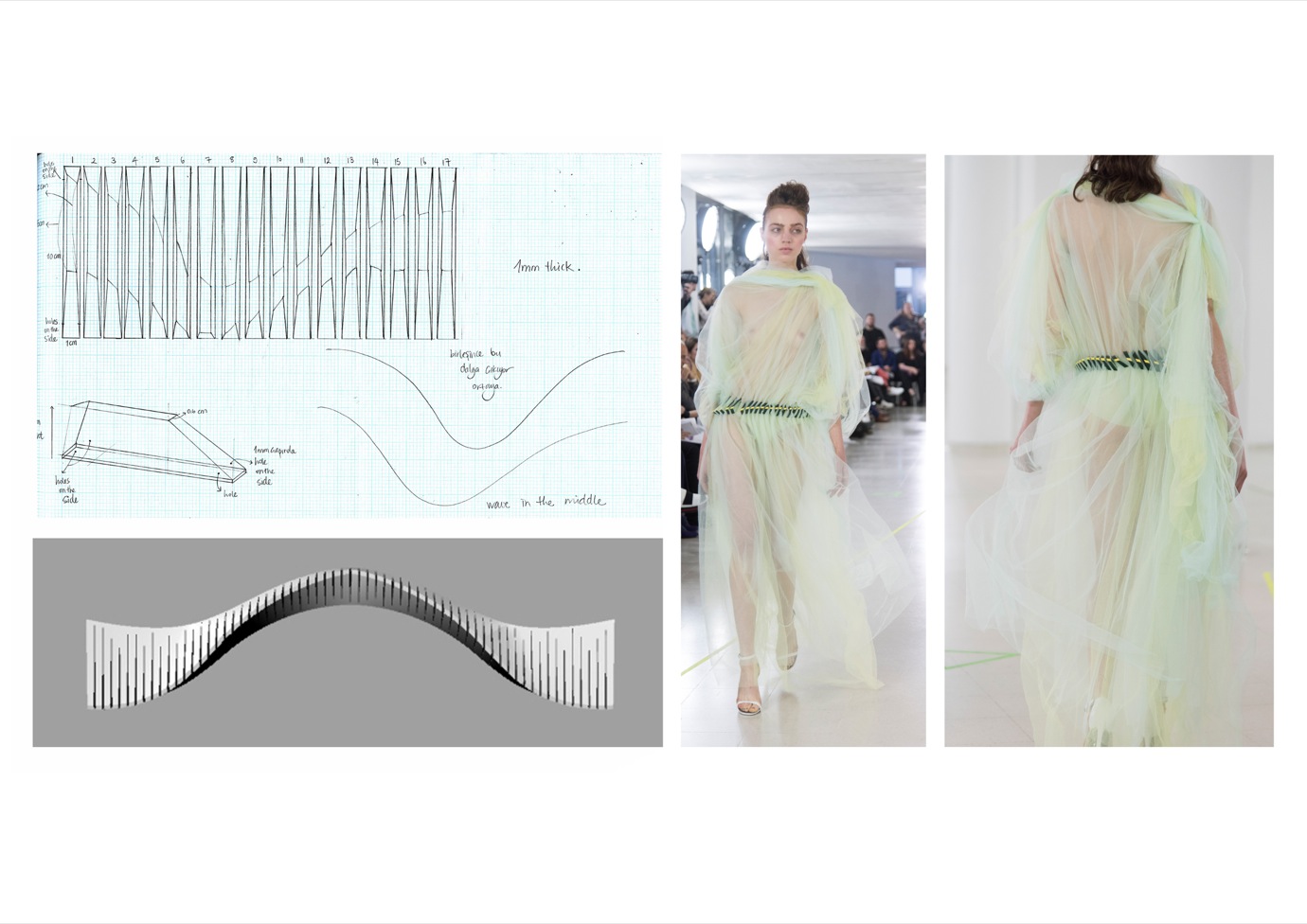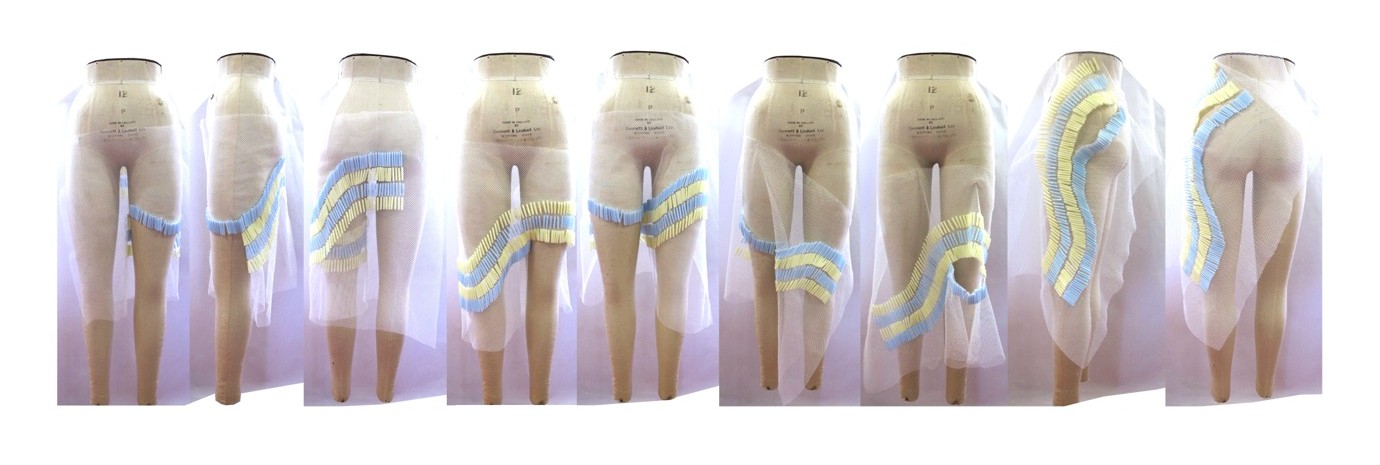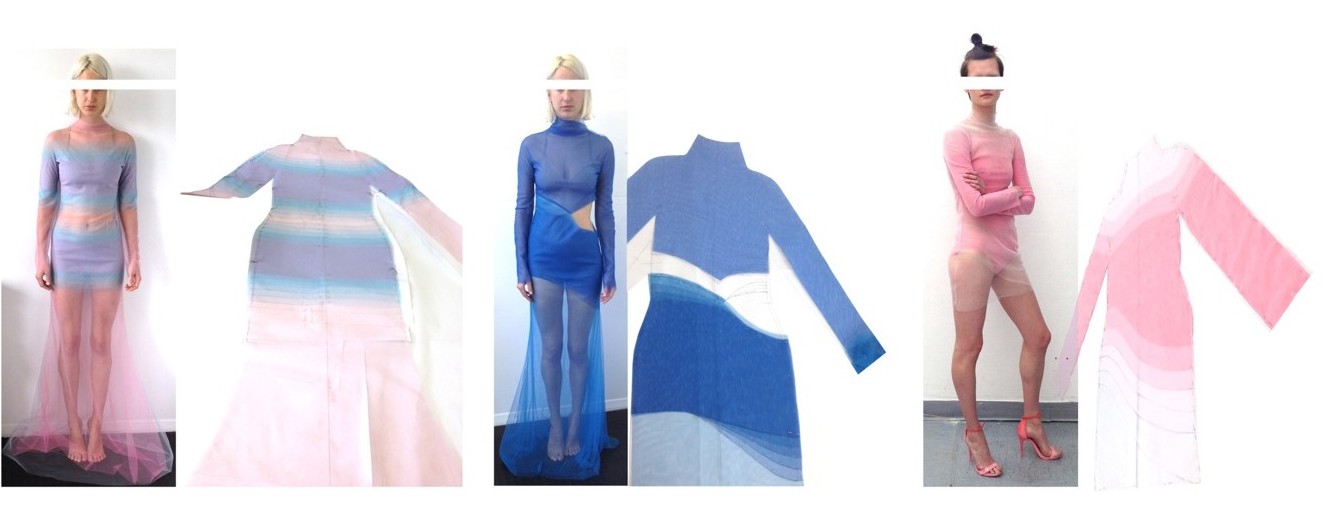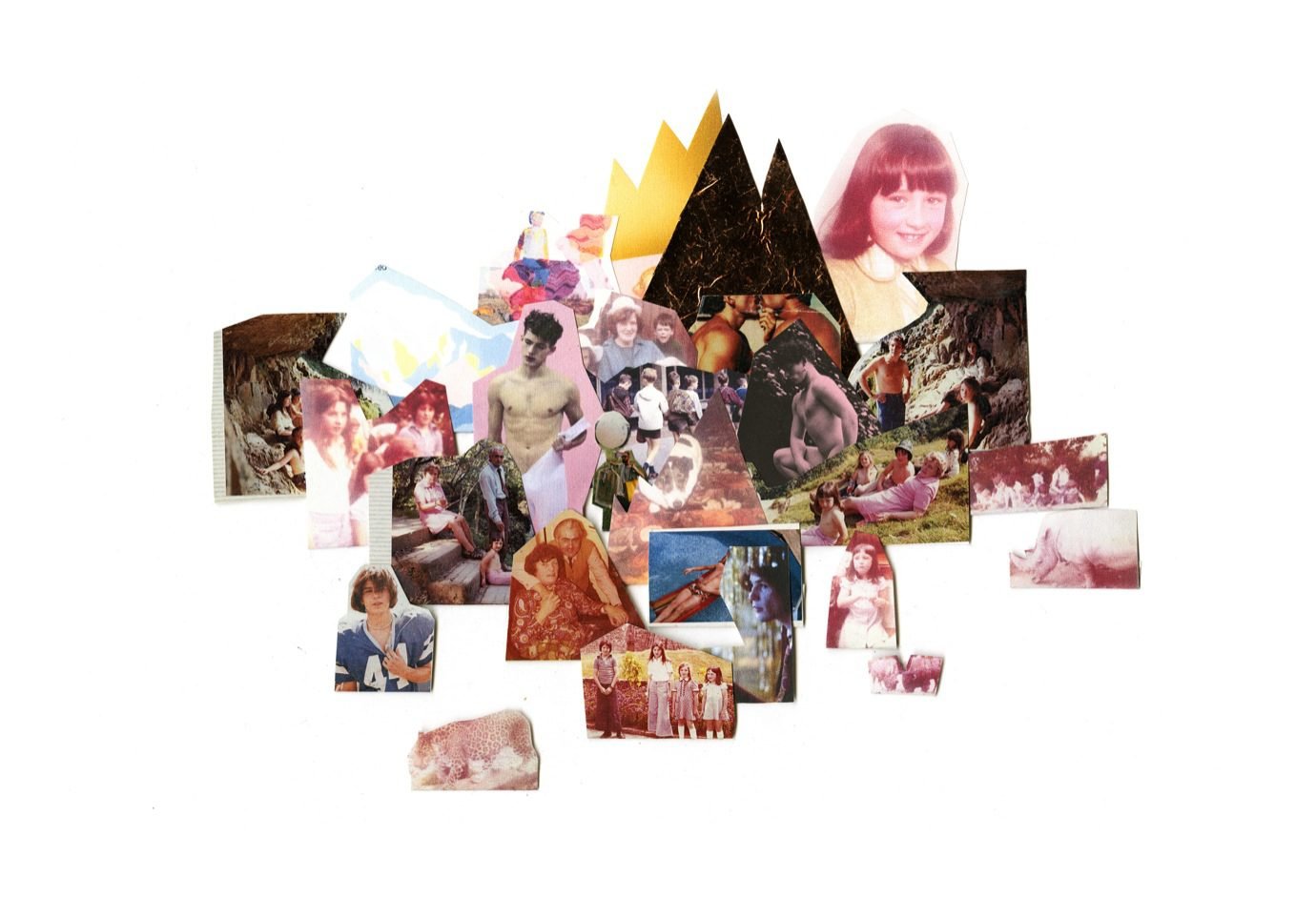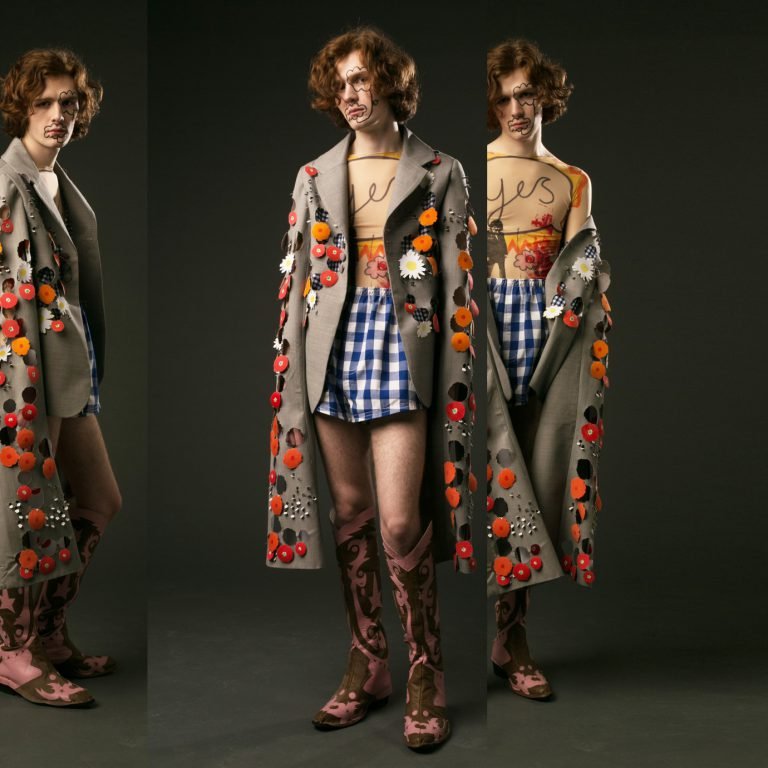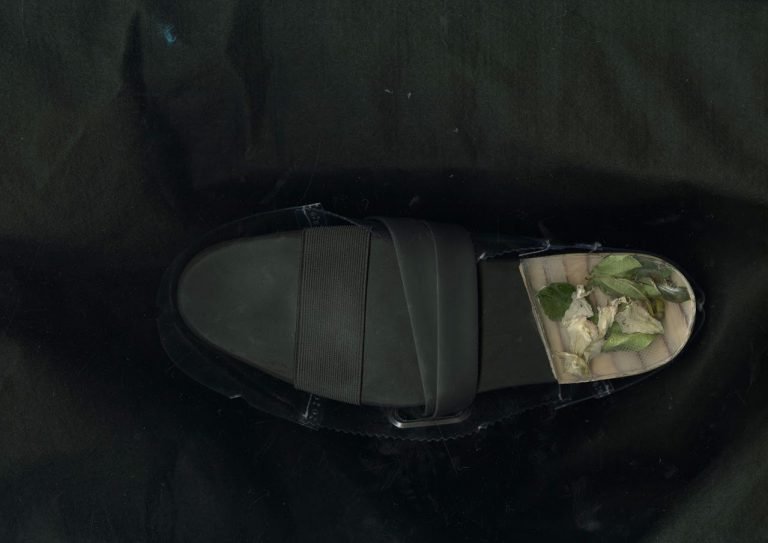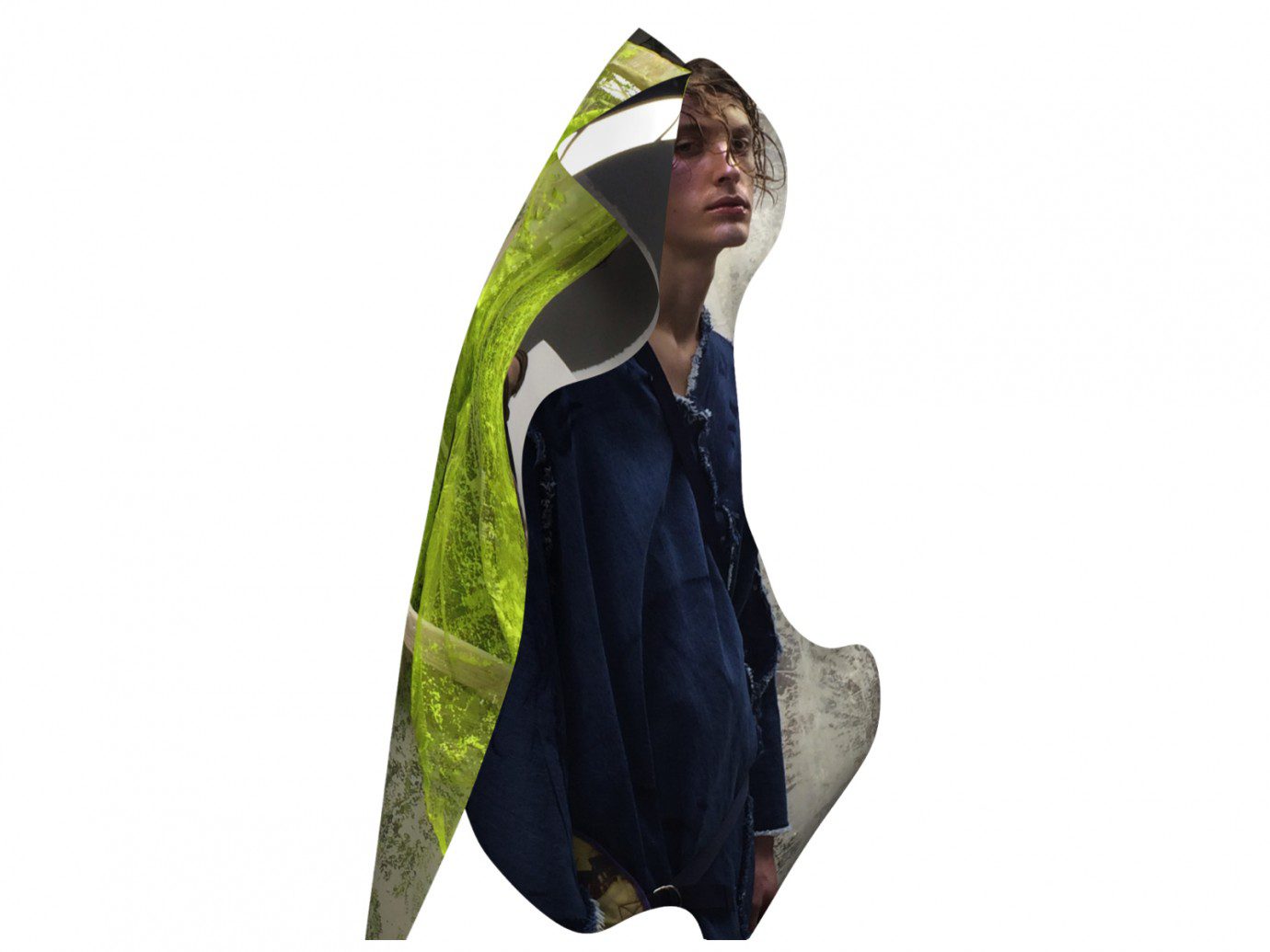“THERE ARE ALREADY TOO MANY CLOTHES IN THE WORLD. YOU DON’T NEED TO ADD ANOTHER GARMENT INTO THE PILE. IT’S ABOUT CREATING AN HONEST, PERSONAL ATTITUDE.” – ZOWIE BROACH
RCA graduate Tuğcan Dökmen
Modernising traditional Turkish craftsmanship
Tuğcan Dökmen felt as if beads were exploding out of her as she began researching the traditional embroidery techniques of her native Turkey. Originally from Ankara, Turkey, she recently completed an MA in Womenswear at The Royal College of Art, presenting a series of nymph-like garments in tulle that referenced the gender-normative summer outfits of Turkish men. We spoke to the designer about cross-disciplinary experimentation and interning for Hussein Chalayan.
London design education only came to the consciousness of Tuğcan Dökmen when, at 15 years-old, she started going on day-trips to an art studio in Istanbul to develop her fashion portfolio. It was here that she learned about Central Saint Martins, and she subsequently applied and was admitted to its foundation course, and after, the BA Fashion Design with Print. “After my BA, I wanted to study Womenswear for my MA to add another dimension to my craft,” she explains over e-mail. “It’s such a long design education, and I did not want to study Foundation, BA and MA all in one place. It felt right to get out of the bubble and experience a different institute and design approach.” At the Royal College of Art, she encountered a variety of interdisciplinary workshops that permitted her to explore design in a larger field. “Still, I needed a bit of time for adjustment at the beginning of my MA,” she says. “The creativity, research, ideas, and concepts that I was trained to develop and challenge in CSM, had to develop into a strong and unique style. I assume that is what MA is about. As Zowie Broach told us: ‘there are already too many clothes in the world. You don’t need to add another garment into the pile. It’s about creating an honest, personal attitude.”
Tuğcan’s personal aesthetic expression circulates around an effortless and fresh beauty, timeless in its sylph-like flowiness, but always balanced with innovative sculptural components, like the resin belt-structures that add shape to her otherwise formless dresses. “UK Vogue described my collection as ‘Sherbet Nymphs’ – I like this comment, and I am shamelessly stealing the definition,” she admits, but certainly, such a description is pretty spot-on. “In my work, I try to playfully balance bold, bright and soft colours, as well as heavy and light materials. Subtle humor is also an important part of my concept and research.”
“I USED TO MAKE UP A STORY OR A FAKE SCIENTIFIC FACT AND TELL THAT STORY THROUGH MY GARMENTS.”
Tuğcan has a particular fondness for experimenting with different materials, textures and forms. This was similarly the starting point for her graduate collection, which took its inspiration, rather humorously, from the quintessential brightly coloured polo shirt worn by Turkish men in the summer. “I always find it entertaining that every summer, Turkish men, all from different age groups and backgrounds, unite in one piece of garment: colourful lined polo-shirts,” she explains. “No matter how macho or tough they are, they all wear bright pink, yellow, orange, and green-lined polo-shirts. Even my father wears them, and it became an inside joke between us.” Drawing on her expertise in textiles, she deconstructed the performed ‘macho’-ness of the garment and turned them into transparent and delicate lines on transparent, light tulle, resulting in dream-like half-crystalline cocktail dresses, turtlenecks, and evening gowns. “I specifically used tulle in my collection, because it looked like I almost dyed the fabric and painted lines on the body through layering. It helped me to explore the future of lines in textile further,” she explains.
As such, it was the first time Tuğcan directly used her own cultural heritage in her design. “I am sure my culture has always been a part of my design, but until my MA collection I had never had a direct inspiration from my origin,” she says. “I used to make up a story or a fake scientific fact and tell that story through my garments. Meanwhile, for years I collected bags of beads and sequins from Turkey, but never used them.” Working on her MA collection, she began sampling and studying traditional Turkish bead working, trying to give them a more contemporary feel. Here, she hit a personal spot. “I felt like beads were exploding out of me. I made a collage to capture my state of emotion. My parents are both psychologists, and I tend to overanalyze things sometimes.”
After her bead epiphany, she began working from its solid forms and 3D-printed samples in clear and dyed resin, and she found its interaction with light tulle to be the perfect solution. The actual technicality of her pieces were made possible by the many workshops she attended during her time at the RCA, as she tried to learn about other disciplines as much as possible. “Working with different techniques and playing around until the last minute is my joy,” she says: “I like working hard, and still letting some mistakes and improvised decisions happen. My tutors did encourage me to try out things, but they also tried to make me realise that you need to stop exploring at some point to finish things up.”
“YOU WORK YEARS TO CREATE A CERTAIN AESTHETIC AND THEN AFTER YOU GRADUATE, YOU VERY QUICKLY NEED TO LEARN HOW TO THINK LIKE A BUSINESS PERSON AND A PR AGENT.”
Her investigation into the gender-norms and cultural patterns of Turkey was furthermore theoretically explored through her MA thesis, which focused on Turkey’s ongoing in-betweenness between past and present, the modern and the traditional, West and East – and how this is exemplified through clothing. “I talked about the position of the young Turkish designers and argued that they shouldn’t focus on either the past or the modern, but learn how to combine them together in their own way. My collection became a practical example of my dissertation’s theory. At least, that was my aim,” she explains. Tuğcan’s collection shows just how efficient complex sociological and historical concepts might be mediated and negotiated through the medium of the worn garment.
The couture elements in her collection signify a rooting in classic dress-making, and her internships at Hussein Chalayan, Diane Von Furstenberg Giles, and Bless certainly nourished that. At Chalayan, she was influenced by the Chalayan École, and worked as a pattern-cutting assistant, while at she DVF advanced her sense of colour and print. “At Giles, while I was sampling with Swarovski Crystals, I realised that I enjoy doing embroidery. And at Bless, I liked the product design approach towards fashion and was inspired by the two strong female figures that created the brand,” she says.
For the future, Tuğcan wishes to carry on developing her style, yet she remains sceptical about pursuing her own label straightaway. As Sarah Mower wrote in her coverage of the RCA graduate show in US Vogue, Tuğcan belongs to a generation of designers for whom independent business is not necessarily a priority. ”Most of us do not know about the business side of fashion,” she argues. ”You work years to create a certain aesthetic and then after you graduate, you very quickly need to learn how to think like a business person and a PR agent. Some previous generations of designers had more time to develop their practice and adjust to the system, but for us, things are getting faster and faster.” Still, Tuğcan Dökmen has been founded, and as she gains more experience in the industry, she is pursuing collaborations with other brands while looking for economic support.

